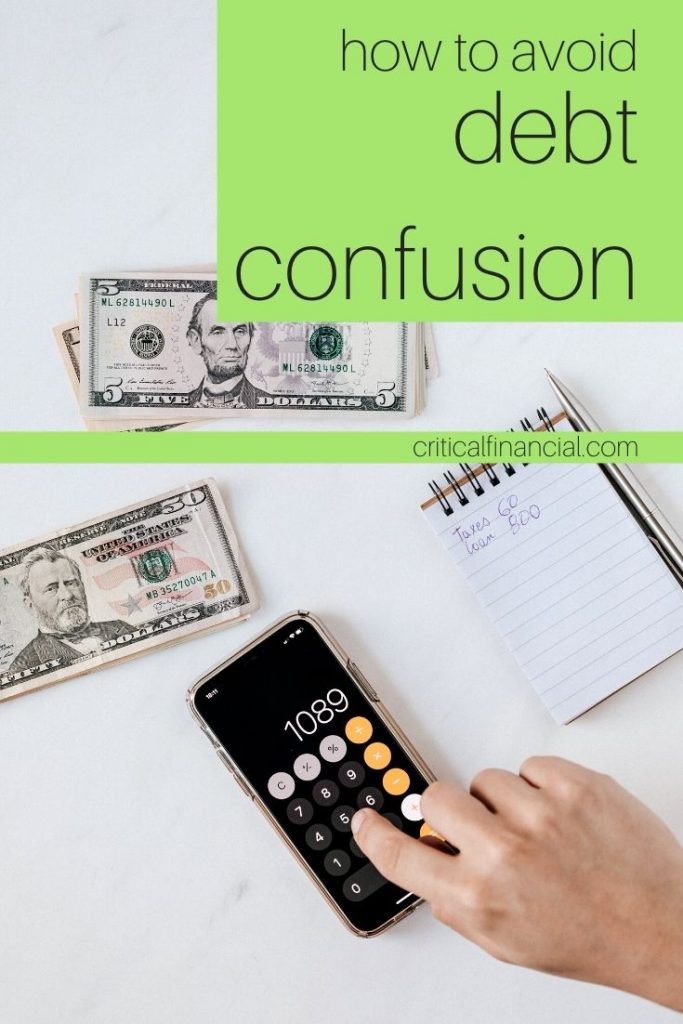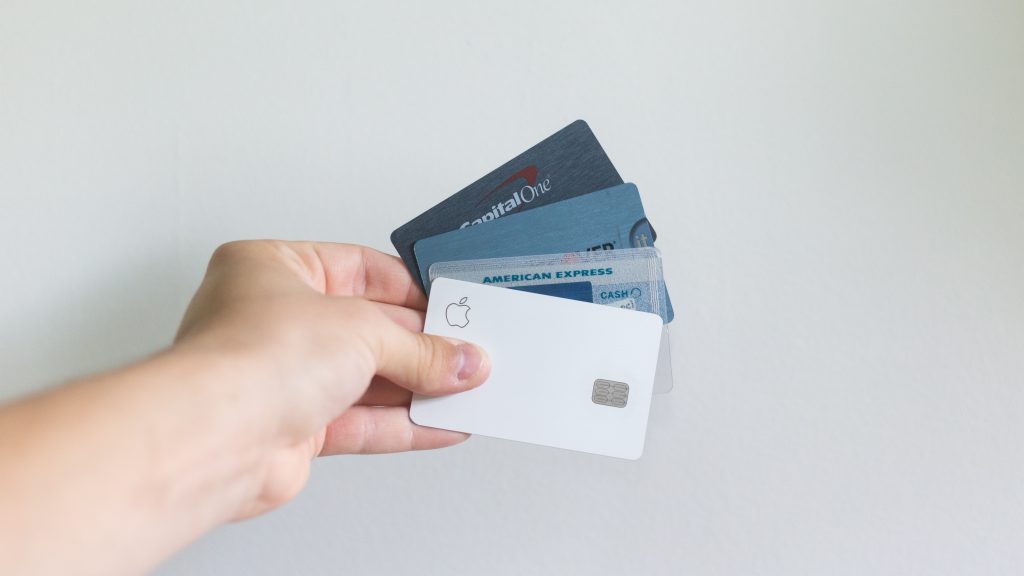
When you have more debt than you can handle, the natural reaction is to shut down. You may not even know how much debt you have, what interest rate you’re paying, or when your payments are due. This reaction is normal; facing your debts can be overwhelming. However, if you take steps to organize your debts, you can avoid debt confusion and begin to gain control of your finances.
Steps to Take to Avoid Debt Confusion
Once you’re ready to face your debt, you can take these steps to see exactly how much you owe and then make a plan to pay down the debt.
Write Down All of Your Debts
You’ll want to make a chart that lists the following:
- Name of creditor,
- Amount owed,
- Interest rate you’re paying,
- When the payment is due,
- What the minimum payment is
This doesn’t have to be fancy. You could write this down on a lined piece of paper and you can also sign-up to a budgeting app, Simplifi.
Create Online Accounts
The next thing you’ll want to do, if you haven’t already, is to create online accounts for each of your credit cards, student loans, car loans, etc. Doing so will allow you to immediately see how much you owe and how much of your payment is going toward interest. You will also be able to make electronic payments so you can pay immediately when you have money available rather than waiting for one monthly payment.
Check Your Due Dates
Once you see on paper the debt that you owe, look at the due dates for each debt. For instance, if all of your debts are due in the same time cluster, such as between the 1st and 4th, do you have trouble paying them all? Would it ease your financial burden if the debts were spaced out, say some due at the beginning of the month and some due at the middle of the month so you could utilize two different paychecks?
If so, then call each creditor and ask if you can change your due date. Many creditors are flexible and willing to do this, especially if doing so means you’ll be able to make your payments on time instead of delaying them.
Ask Lenders to Reduce Your Interest Rate

If you have several high-interest rate credit cards, you can call the companies and ask them to reduce your interest rate. You’ll have more success with this if you have been paying on time and have been a customer for some time.
Keep in mind that you’ll likely only have success 50 percent of the time or less, but any reduction in interest rate can help you get out of debt faster. Here is a simple script you can follow.
Calculate How Much Money You Have for Debt Repayment
If you have not done so already, the next step is to create a realistic budget. A budget will tell you how much money you have available for debt repayment. Do you have enough to make the minimum payment on each debt? If so, that’s a good start.
If you have more money for debt repayment than is required for the minimum payment, you will be able to get out of debt a bit quicker. We’ll get back to that in a few more steps.
If you have less money available than is required for the minimum payments on each debt, you’ll need to follow the advice on the next step.
Pursue Options to Pause or Reduce Payments
If you don’t have enough money to make each of the minimum payments monthly, you’ll need to see if you can reduce the minimum amount due.
Student Loans
If you owe on student loans, you can switch to an income-contingent repayment plan or a graduated payment plan. If you still can’t afford those plans, you can check with your lender and see if you qualify for a hardship deferral. A hardship deferral will stop your required payments for up to three years.
However, check to see what type of student loan you have. If you have a federally subsidized loan, your loan will not accrue interest during the deferral. If you have a federally unsubsidized loan, the interest will accrue during the deferral, which can make paying off the loan more difficult when payments begin again.
Credit Cards
Credit card companies are usually willing to negotiate a repayment plan because they want you to pay down your debt, even if it isn’t at the minimum amount they usually require. However, know that negotiating for a lower payment will usually negatively affect your credit score.
Decide Which Repayment Method You Want to Use
If you have enough money to make the minimum monthly payments or you have a surplus, your next step is to decide how you want to pay down your debt.
Debt Snowball
Using the debt snowball method, you order your debts from smallest owed to largest owed. Then, whenever you have any extra money beyond the minimum payments due, you put the extra on the smallest debt.
This method does not take into account interest rates, and it usually does cost you more in interest overall. However, the debt snowball method can be motivating because you may be able to eliminate some of your smaller debts quickly.
Debt Avalanche
If you choose the debt avalanche method, you’ll pay the least amount in interest over the time you’re repaying your debt.
Using this method, you order your debts from highest interest rate to lowest interest rate. You put any extra money on the debt with the highest interest rate. This method will likely get you out of debt a few months faster than the debt snowball, but you may not be as motivated to pay down the debt because you don’t see small wins as you do with the debt snowball.
You can use a debt calculator to compare the difference between the two methods.
Final Thoughts
Being deep in debt can be overwhelming. You can avoid debt confusion by taking these steps. While getting out of debt won’t be a quick process, you’ll feel more confident when you have a concrete plan and begin your debt-free journey.
Read More
How to Apply for an Online Personal Loan to Pay Off Debt
How to Climb Out of Debt Slowly but Surely
Fact Check Finance: Wait to Invest Until You Pay Off Your Debt
Melissa is a writer and virtual assistant. She earned her Master’s from Southern Illinois University, and her Bachelor’s in English from the University of Michigan. When she’s not working, you can find her homeschooling her kids, reading a good book, or cooking. She resides in New York where she loves the natural beauty of the area.

